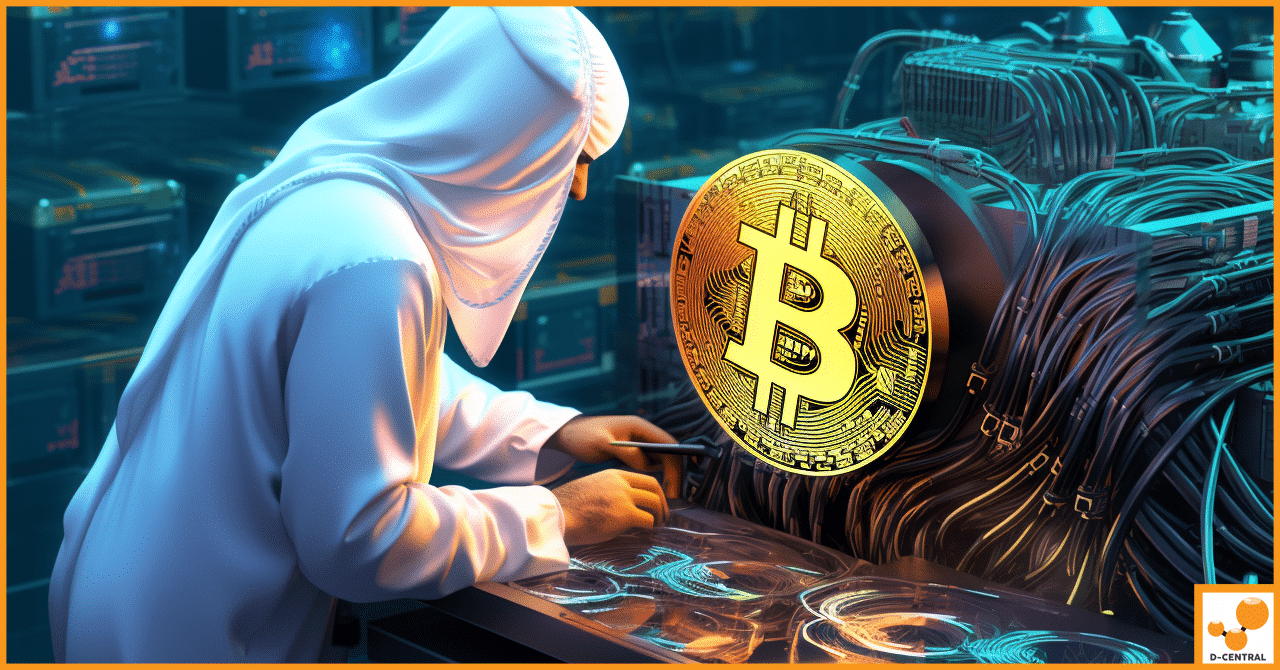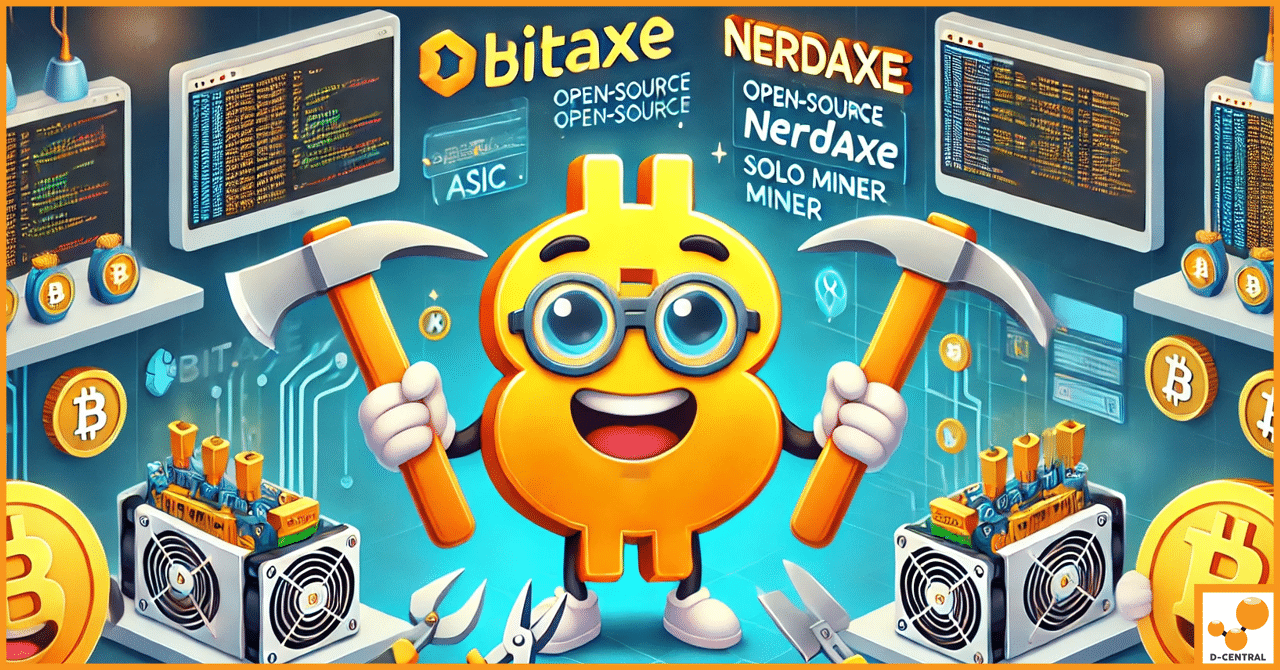
UAE’s Emergence as a Bitcoin Mining Powerhouse
Bitcoin mining is a critical component of the Bitcoin network. It involves the use of high-powered computers, typically specialized hardware
4479 Desserte Nord Autoroute 440, Laval, QC H7P 6E2

Bitcoin mining is the process by which new bitcoins are entered into circulation, but it is also a critical component of the maintenance and development of the blockchain ledger. It is performed using very sophisticated computers that solve extremely complex computational math problems. Cryptocurrency mining, especially Bitcoin mining, requires significant computational power and energy. As these mining machines, known as ASICs (Application-Specific Integrated Circuits), operate at high capacity, they generate substantial heat, which if not managed properly, can reduce efficiency and the lifespan of the mining hardware.
Efficient cooling is paramount in Bitcoin mining operations because excessive heat can lead to hardware malfunctions and decreased efficiency, directly impacting profitability. Cooling solutions not only preserve the hardware’s longevity but also maintain optimal performance by preventing thermal throttling, a condition where the hardware slows down its operation to prevent overheating.
Water cooling technology emerges as a superior solution for heat management in these high-stake operations. Unlike traditional air cooling, which struggles to manage the heat output of the most powerful miners, water cooling involves circulating water or a liquid coolant through small blocks attached to the processors. This method is much more effective at absorbing and dissipating heat. Water cooling systems can maintain a consistent operating temperature, enhancing the performance and reliability of mining equipment. By implementing water cooling technology, mining operations can achieve higher efficiency, reduce noise levels, and potentially lower the overall energy consumption of their operations, aligning with the growing emphasis on sustainability in the crypto mining industry.
Water cooling is a method of heat removal that is more effective and efficient than traditional air cooling, particularly in environments that demand high performance from compact hardware configurations like those found in Bitcoin mining. While air cooling relies on fans to circulate air around heat-generating components to disperse heat, water cooling uses a liquid coolant to absorb and transfer heat directly from these components.
The superior efficiency of water cooling comes from the higher heat capacity and density of liquids compared to air. This allows water cooling systems to manage larger amounts of heat over the same time period or the same amount of heat more quickly. The direct contact between the cooling liquid and the heat source, facilitated by water blocks, efficiently captures heat before it can affect the performance of the ASIC chips. Once the heat is absorbed by the liquid, it is pumped away to a radiator where it is released into the air outside the system, thus maintaining a cooler environment for the mining hardware.
Together, these components create a highly effective cooling loop that keeps mining rigs operating at optimal temperatures, thus maximizing efficiency and prolonging the lifespan of the hardware. By using water cooling technology, miners can significantly reduce the risk of overheating, which is crucial for maintaining the profitability and sustainability of their mining operations.
Water cooling systems maintain consistent temperatures across mining rigs, significantly enhancing their performance and reliability. By utilizing water’s superior heat absorption properties compared to air, water cooling systems prevent the common issue of overheating in high-performance mining operations. This consistent temperature management is crucial for maintaining the efficiency of ASIC miners, which can throttle down and lose efficiency when overheated. For example, systems like the Antminer S19 Hydro and S21 series have integrated water cooling to ensure that even under continuous operation, the heat generated does not degrade the system’s overall performance.
Water cooling is not only more effective at heat removal but also more energy-efficient compared to traditional air cooling systems. The direct transfer of heat from components to the coolant reduces the need for multiple fans and extensive air conditioning, which are energy-intensive. This reduction in energy consumption is critical in mining operations where profit margins can be thin, and operational costs like electricity play a significant role. By lowering the thermal stress on components, water cooling also extends the lifespan of the hardware, which can translate into cost savings by delaying replacement expenses.
One of the notable benefits of water cooling systems over air cooling is the reduction in noise levels. Air cooling relies on multiple high-speed fans which can be quite loud, especially in large-scale mining setups. Water cooling systems use fewer fans, and those present are often only part of the radiator setup outside the main chassis. This setup significantly reduces the acoustic footprint of the mining operation, making it ideal for environments where noise pollution is a concern, such as residential areas or shared workspaces.
Real-world applications of water cooling systems in cryptocurrency mining have demonstrated their effectiveness and reliability. The Antminer S19 Hydro, noted for its water-cooling capabilities, provides an excellent example of how integrating water blocks and a dedicated cooling circuit can enhance miner performance and stability. Additionally, the newer Antminer S21 series incorporates advanced cooling technologies to handle higher power densities and improve overall efficiency. These examples underscore how water cooling technology is being actively adapted to meet the increasingly rigorous demands of modern cryptocurrency mining operations.
By using these systems, miners can achieve higher operational efficiency and better manage the environmental impact of their operations, aligning with the broader industry trends towards sustainability and increased computational demands.
Installing water cooling systems involves several complexities not typically encountered with traditional air cooling setups. The process requires precise configuration to ensure effective heat transfer and avoid leaks. It involves the integration of various components such as pumps, radiators, water blocks, and intricate piping systems that must be perfectly sealed to prevent leaks. The layout must be planned to optimize space and ensure efficient coolant flow, which can be particularly challenging in compact spaces or when retrofitting existing mining setups. This complexity often necessitates the involvement of specialists with knowledge in thermodynamics and fluid dynamics, adding to the installation challenges.
The costs associated with water cooling systems are generally higher than those for traditional air-cooled systems. This is due to the more sophisticated components required, such as specialized pumps, radiators, coolant reservoirs, and the water blocks themselves. Additionally, the installation process might require professional services, further increasing the initial investment. While the operational costs may be lower over time due to improved energy efficiency and reduced wear on components, the upfront investment can be a significant barrier, especially for smaller operations or individual miners considering the scalability of their setups.
Maintaining a water cooling system requires a more hands-on approach compared to air cooling solutions. Regular checks are necessary to monitor coolant levels, inspect for leaks, and ensure that the pumps and fans are functioning correctly. The coolant may need to be replaced or replenished periodically to maintain its effectiveness and prevent corrosion or biological growth, such as algae, which can clog and corrode the system. The potential for leaks presents a significant risk, as water damage can lead to costly hardware failures. Ensuring the system is tightly sealed and regularly inspected is crucial for preventing such issues.
To manage these risks effectively, it’s recommended to follow a strict maintenance schedule and use high-quality components known for their reliability. Monitoring systems can be installed to alert operators to changes in pressure or temperature that might indicate a leak or failure in the system. These proactive measures can help mitigate the inherent risks associated with water cooling systems, ensuring they provide the intended benefits without unexpected downtime or damage.
These challenges underscore the need for careful consideration before implementing a water cooling solution in Bitcoin mining operations. While the benefits can be substantial, the increased complexity, cost, and maintenance requirements must be well understood and managed to realize the full potential of water cooling technology.
Many ASIC miners now come with built-in water cooling technologies to enhance their performance and reliability. Notable among these are the Antminer S19 Hydro and S21 series, which represent a significant evolution in mining hardware design.
These integrated solutions are ideal for miners who want a seamless setup without the need to handle complex additional installations. They provide an out-of-the-box solution that minimizes setup time and reduces the risks associated with manual installation of cooling systems.
For those who already own mining rigs or prefer to customize their cooling solutions, the market offers a variety of aftermarket water cooling kits. These systems can be installed on existing mining rigs to enhance their cooling efficiency.
Various manufacturers provide complete kits that include all the necessary components such as pumps, radiators, water blocks, tubing, and coolants. These kits are designed to be compatible with a wide range of mining hardware and can be tailored to meet specific cooling needs.
These aftermarket solutions give miners the flexibility to upgrade their systems as needed and adapt to the evolving demands of cryptocurrency mining. They are particularly valuable for miners who need to manage heat in densely packed mining setups or those operating in warmer climates where traditional cooling methods fall short.
Both integrated and aftermarket water cooling solutions provide significant benefits in terms of efficiency, noise reduction, and the overall longevity of mining hardware. Choosing the right solution depends on the miner’s specific operational needs, budget, and technical expertise.
Water cooling technology significantly enhances the efficiency and performance of Bitcoin mining operations by providing superior heat management compared to traditional air cooling systems. By maintaining consistent and lower operational temperatures, water cooling prevents overheating and allows mining hardware to operate at higher efficiencies, thereby preventing thermal throttling and enhancing overall performance. This method is not only more energy-efficient—reducing the reliance on high RPM fans and extensive air conditioning—but also operates quieter, making it suitable for environments where noise is a concern. The market offers a range of solutions, including integrated systems like the Antminer S19 Hydro and S21 series, as well as aftermarket kits that enable miners to retrofit existing setups, accommodating different needs and budgets. Comparative studies and real-world applications consistently show that water-cooled rigs outperform their air-cooled counterparts in terms of efficiency and hash rate under similar operational conditions.
The increasing adoption of water cooling in Bitcoin mining reflects a significant advancement in tackling the challenges associated with high-performance mining activities. As mining operations demand more power and efficiency, water cooling is set to play a crucial role in enhancing the sustainability and economic viability of cryptocurrency mining. This technology not only improves operational performance but also aligns with broader environmental goals by minimizing energy consumption and heat waste. By effectively managing the heat generated by mining rigs, water cooling technology not only extends the lifespan of the hardware but also ensures higher profitability, making it a pivotal development in the future landscape of cryptocurrency mining.
What is Bitcoin mining?
Bitcoin mining is the process through which new bitcoins are created and transactions are verified and added to the blockchain ledger. It involves solving complex computational math problems using specialized computers known as ASICs.
Why is cooling important in Bitcoin mining?
Cooling is crucial because it prevents the mining hardware from overheating. Overheating can lead to reduced efficiency, hardware malfunctions, and a shortened lifespan of the mining equipment, directly impacting profitability.
What is water cooling technology in Bitcoin mining?
Water cooling technology involves circulating water or a liquid coolant through small blocks attached to the processors of mining hardware. This method is more effective at absorbing and dissipating heat compared to traditional air cooling, improving performance and reliability.
What are the key components of water cooling systems?
The key components include pumps (for circulating the coolant), radiators (where heat is dissipated), water blocks (attached directly to heat-generating parts), coolant (usually a mix to prevent corrosion and algae), and durable tubing to connect the system.
What are the advantages of water cooling cabinets?
Advantages include more efficient heat management, enhanced performance and reliability of mining hardware, energy efficiency, noise reduction, and the potential for lower overall energy consumption.
What are the challenges of implementing water cooling systems in Bitcoin mining?
Challenges include the complexity of installation, higher initial investment compared to air cooling, maintenance requirements, and the risk of leaks which could lead to hardware damage.
Can any Bitcoin mining rig be adapted to use water cooling?
Yes, both integrated and aftermarket water cooling solutions are available. Miners can use integrated systems like the Antminer S19 Hydro and S21 series, or choose aftermarket kits to retrofit existing setups, depending on their specific needs and budgets.
Why is water cooling becoming increasingly popular in Bitcoin mining?
Water cooling is gaining popularity due to its superior ability to manage heat, its energy efficiency, and its quieter operation. These benefits align with the industry’s move towards more sustainable practices and the need for higher efficiency in mining operations.
DISCLAIMER: D-Central Technologies and its associated content, including this blog, do not serve as financial advisors or official investment advisors. The insights and opinions shared here or by any guests featured in our content are provided purely for informational and educational purposes. Such communications should not be interpreted as financial, investment, legal, tax, or any form of specific advice. We are committed to advancing the knowledge and understanding of Bitcoin and its potential impact on society. However, we urge our community to proceed with caution and informed judgment in all related endeavors.
Related Posts

Bitcoin mining is a critical component of the Bitcoin network. It involves the use of high-powered computers, typically specialized hardware

In the rapidly evolving world of cryptocurrency, choosing the right mining hardware can significantly impact your success. This comprehensive guide

In the evolving landscape of cryptocurrency mining, selecting the right hardware is pivotal to success. The efficiency, cost-effectiveness, and longevity